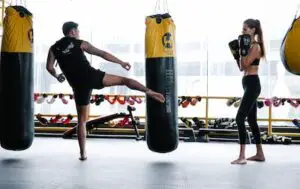In the art of Aikido, practitioners engage in a multitude of rituals and traditions, which serve to enhance their practice and foster a deeper understanding of the martial art. Among these rituals, the ceremonial bows hold significant importance. In this article, we delve into the reasons behind the ceremonial bows in Aikido and shed light on their profound meaning. Join us as we explore the historical, philosophical, and practical aspects of these bows, uncovering their purpose and significance within the Aikido practice.
The Origin and Evolution of Aikido’s Ceremonial Bows
Aikido’s ceremonial bows trace their roots back to the rich traditions of Japanese martial arts. Founder Morihei Ueshiba, also known as O-Sensei, incorporated elements from various martial arts, including the ceremonial practices of samurai warriors. The ceremonial bows in Aikido have evolved over time, adapting to the changing needs and philosophies of the art.
The Symbolism and Philosophy behind Ceremonial Bows
Ceremonial bows in Aikido carry profound symbolism and reflect the core principles of the art. The bow represents humility, respect, and gratitude. By bowing, practitioners acknowledge their connection to the martial lineage, show respect for their training partners, and express gratitude for the opportunity to learn and grow. The act of bowing also embodies Aikido’s philosophy of harmony, as it signifies the willingness to blend and work together with others.
Furthermore, the ceremonial bows align with Eastern philosophical concepts such as Zen Buddhism and Shintoism. The bow becomes a meditative act, allowing practitioners to cultivate mindfulness and a deeper connection with their training and the environment around them.
The Role of Ceremonial Bows in Aikido Dojos
Ceremonial bows play a vital role in setting the tone for the Aikido training session. They serve as a ritualistic entry point, allowing practitioners to transition from the outside world to the focused and disciplined environment of the dojo. The initial standing bow is a way to center oneself and mentally prepare for the practice ahead.
Bowing to the kamiza, which is the elevated area at the front of the dojo, signifies reverence for the art, the founder, and the lineage of teachers who have come before. It is a way to pay respect and acknowledge the spiritual aspects of Aikido. Bowing to instructors and fellow practitioners demonstrates mutual respect, recognition of their skill and knowledge, and a willingness to learn from one another.
How Ceremonial Bows Enhance Martial Etiquette
Ceremonial bows are instrumental in developing and upholding martial etiquette within the Aikido community. They establish a framework of respect and discipline, fostering a harmonious training environment. By bowing, practitioners recognize the hierarchical structure of the dojo, respecting the authority and experience of their instructors.
Bows also promote unity among practitioners. By acknowledging each other through the bow, a sense of equality and shared purpose is cultivated. This unity translates into smooth and cooperative training, where practitioners support and learn from one another.
The Practical Benefits of Ceremonial Bows in Aikido
Beyond their symbolic and philosophical significance, ceremonial bows offer practical benefits in the practice of Aikido. Firstly, bows help create a focused mindset. By taking a moment to bow, practitioners shift their attention from external distractions and enter a state of concentration and readiness.
Bows also serve as transitional markers between techniques or training exercises. They provide brief moments of reflection and mental reset, allowing practitioners to approach each new movement or partner with a fresh perspective.
Moreover, bows contribute to safety during practice. They provide a visual and verbal cue for starting and ending techniques, helping to maintain a smooth flow of movements and preventing accidents or misunderstandings.
Debunking Common Misconceptions about Ceremonial Bows
There are a few misconceptions surrounding ceremonial bows in Aikido. Some may view them as mere showmanship or empty tradition. However, as explored earlier, the bows hold deep meaning and serve practical purposes in the Aikido practice.
It’s also important to note that while there are general guidelines for performing ceremonial bows, there isn’t a rigid, universal way to perform them. Different dojos or instructors may have slight variations in their bowing rituals, but the underlying principles of respect and gratitude remain consistent.
Conclusion
Through this comprehensive exploration of the ceremonial bows in Aikido, it becomes evident that these rituals are not merely empty gestures but hold significant meaning. The historical, philosophical, and practical aspects of the bows contribute to the overall Aikido experience. From fostering discipline and unity to establishing a respectful environment, the ceremonial bows play a crucial role in the development of Aikido practitioners. Embracing these bows is not only a mark of respect but also an opportunity to deepen one’s understanding of the art and its principles. By bowing, Aikido practitioners embark on a journey of personal growth, harmony, and lifelong learning.





